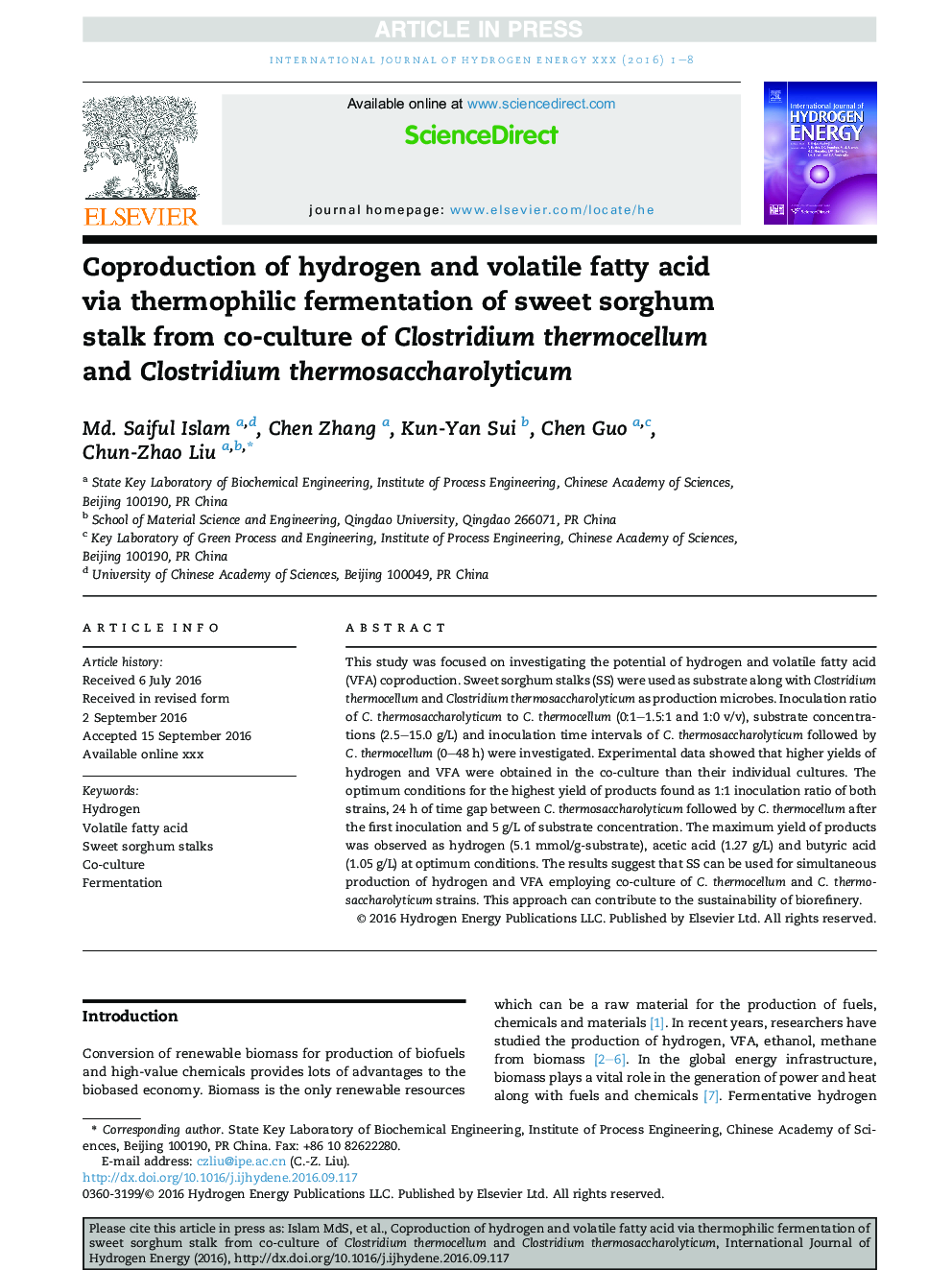| Article ID | Journal | Published Year | Pages | File Type |
|---|---|---|---|---|
| 5146685 | International Journal of Hydrogen Energy | 2017 | 8 Pages |
Abstract
This study was focused on investigating the potential of hydrogen and volatile fatty acid (VFA) coproduction. Sweet sorghum stalks (SS) were used as substrate along with Clostridium thermocellum and Clostridium thermosaccharolyticum as production microbes. Inoculation ratio of C. thermosaccharolyticum to C. thermocellum (0:1-1.5:1 and 1:0 v/v), substrate concentrations (2.5-15.0 g/L) and inoculation time intervals of C. thermosaccharolyticum followed by C. thermocellum (0-48 h) were investigated. Experimental data showed that higher yields of hydrogen and VFA were obtained in the co-culture than their individual cultures. The optimum conditions for the highest yield of products found as 1:1 inoculation ratio of both strains, 24 h of time gap between C. thermosaccharolyticum followed by C. thermocellum after the first inoculation and 5 g/L of substrate concentration. The maximum yield of products was observed as hydrogen (5.1 mmol/g-substrate), acetic acid (1.27 g/L) and butyric acid (1.05 g/L) at optimum conditions. The results suggest that SS can be used for simultaneous production of hydrogen and VFA employing co-culture of C. thermocellum and C. thermosaccharolyticum strains. This approach can contribute to the sustainability of biorefinery.
Related Topics
Physical Sciences and Engineering
Chemistry
Electrochemistry
Authors
Md. Saiful Islam, Chen Zhang, Kun-Yan Sui, Chen Guo, Chun-Zhao Liu,
